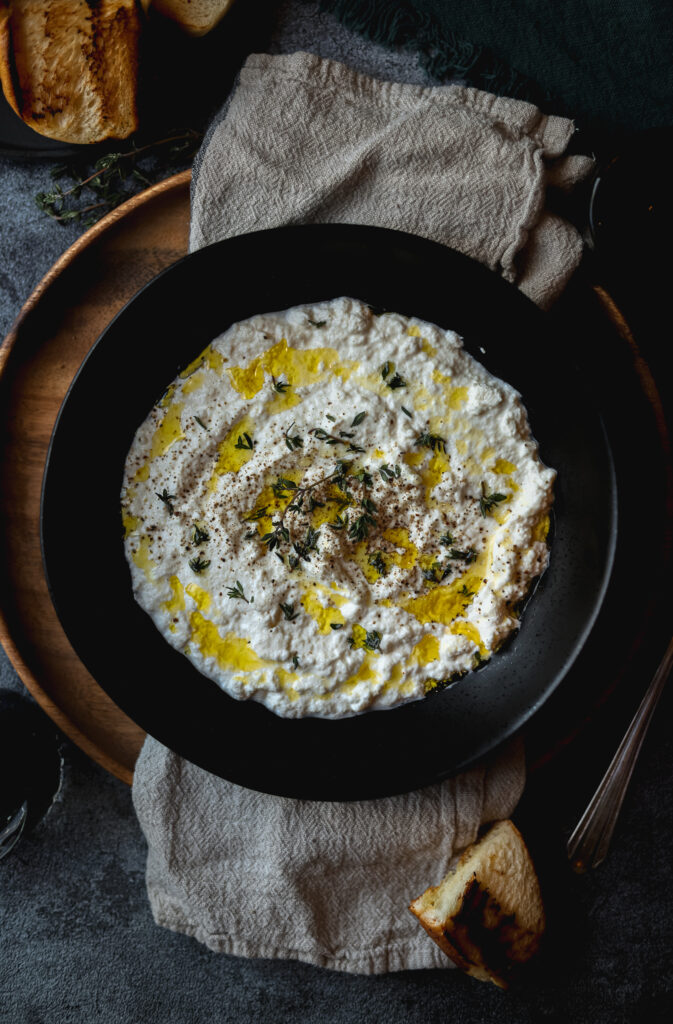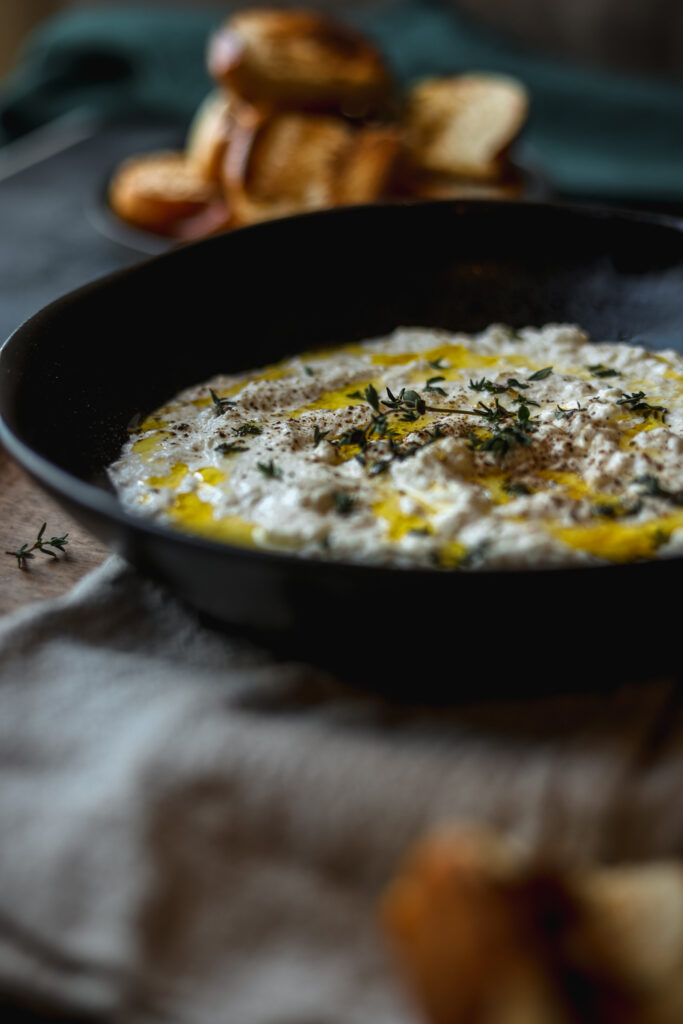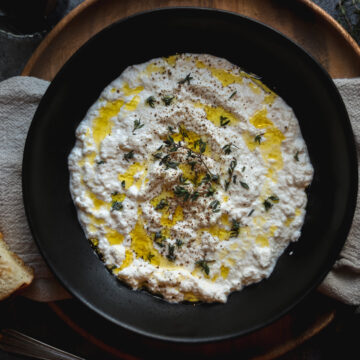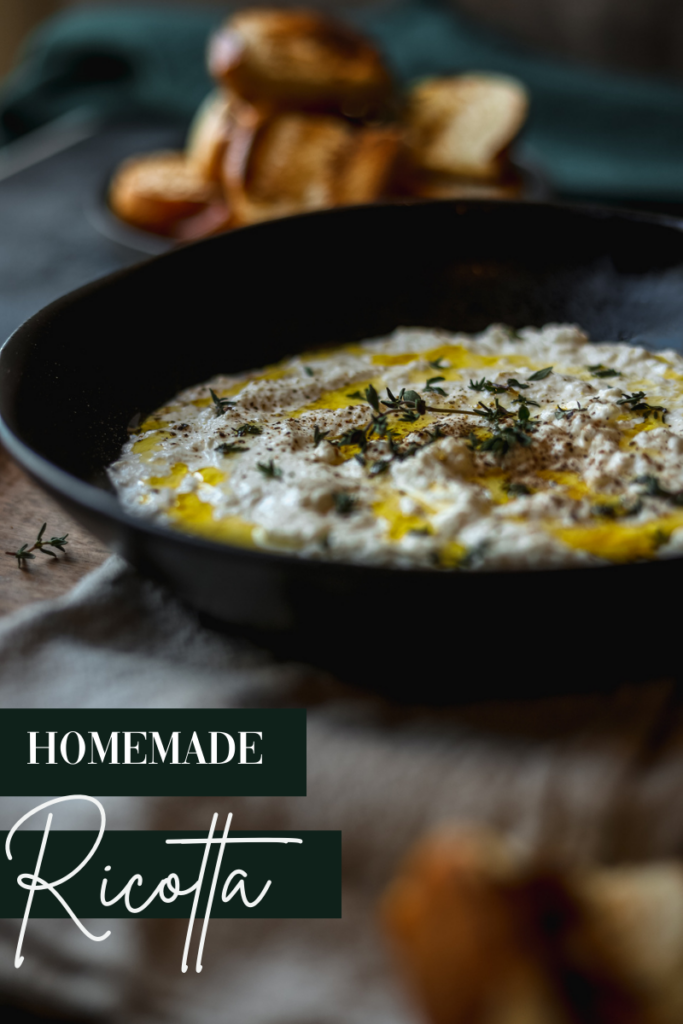Ricotta cheese is a staple in my house, and making it yourself is extremely easy. Plus it's so much better fresh! Let's break down how to make ricotta cheese on your own stove, you'll never go back!

How to Make Ricotta Cheese
Making homemade ricotta sounds intimidating, but I promise, if you follow these steps, you'll get it. One thing to note right off the bat: if it's your first time, DO NOT make any substitutions. Believe me, I've tried that, and it does not go well. In particular, you can't substitute the white wine vinegar. Different vinegars contain different levels of acidity, and you need one that's pretty high to make sure that the solid separates from the liquid in the cheese. Some people will say you can substitute fresh lemon juice if you want, and if you're feeling brave go ahead. I've also done that and it totally did not work for me.
Once you've made it a few times, you can experiment with the different types and ratios of milk and cream you use. It does change up the texture a bit. I've settled on a 1:1 ratio of heavy cream and whole milk, which results in a very creamy, less dry version of the cheese. My husband though prefers the more solid version, so it's really up to your individual taste.
So, how do you make ricotta cheese? Let's get to it.
- Heat up your dairy in a large pot over medium heat. You don't want to scald the milk, just get it to point it's almost boiling before you turn it off. Stir it occasionally and KEEP AN EYE ON IT. The number of times I've completely boiled the dairy in this recipe is too numerous to count. Makes a huge, annoying mess to clean up later.
- Once the dairy is hot, take it off the heat and add your salt. Add your vinegar and stir. Let it sit for one minute.
- Prepare a large mixing bowl with a sieve, and a layer of cheese cloth lining it.
- Slowly and carefully pour the contents of the pot into the sieve. It should be steaming hot, so be careful.
- Let it drain for at least 25 minutes (again, depending on how thick you want the cheese, you can leave it for more or less time). Using a spatula, scrape out the contents of the sieve.
- Store in an airtight container in the fridge for up to one week. And your done!

What to make with Homemade Ricotta
While pastas like ravioli and lasagna generally steal the show with homemade ricotta cheese, there really are a million ways to use it. One of my personal favorites is on an appetizer like a crostini, and then putting a flavored topping or spread over it. It's amazing on a charcuterie board. Try it underneath some grilled peaches! Or, try this fresh and creamy recipe of spring pea, mint and homemade ricotta dip. Put it on your pizza as a topping (this is legit amazing). Serve it with some honey and orange zest on toast in the morning. The possibilities are endless!
How to Freeze Ricotta
Ricotta is definitely best fresh, but if you want to freeze, here's how to do it:
- Make sure the ricotta is in a well sealed contained.
- When you defrost, let it thaw out in the fridge and not on the counter.
- Take out as much of the liquid as you can.
- Freeze fresh ricotta, not five day old ricotta.
- Don't freeze if for more than two months.
- If you do freeze ricotta, it does affect the texture. I would use it in baked pasta dish rather than as a spread or a dip.
- A dryer, thicker ricotta freezes much better than one with more liquid, so keep this in mind as you're making it!
I will say it again, you can freeze ricotta. That doesn't mean you should freeze ricotta. If you're looking at freezing it to store and have on hand, then honestly, I would recommend buying the store bought stuff that's already sealed and throwing it in the freezer instead.
📖 Recipe

Homemade Ricotta Cheese
Equipment
- Sieve
- Cheesecloth
Ingredients
- 3 C whole milk
- 3 C heavy cream
- 1 tablespoon salt
- 3 tablespoon white wine vinegar
Instructions
- In a large sauce pan, heat the whole milk and heavy cream over medium heat until steaming and hot, but not boiling. Stir occasionally and keep an eye on it! You don't want it to boil. Turn off the heat.
- Add the salt, and add the vinegar, stirring gently. Let it sit for 1-2 minutes.
- Prepare you sieve lined with one layer of cheesecloth. Place over a large mixing bowl.
- Carefully pour your milk mixture over the sieve. Let it strain for at least 25 minutes, or until it reaches desired consistency.
- Carefully scrape the cheese into an airtight container. Keep in the fridge for up to one week.
Notes
Nutrition
Hi, I'm Cara! I'm a food writer, journalist, and recipe developer. I'm obsessed good food, good wine, good cocktails and entertaining. I've picked up a few tips over the years, and love sharing them with others.




Leave a Reply